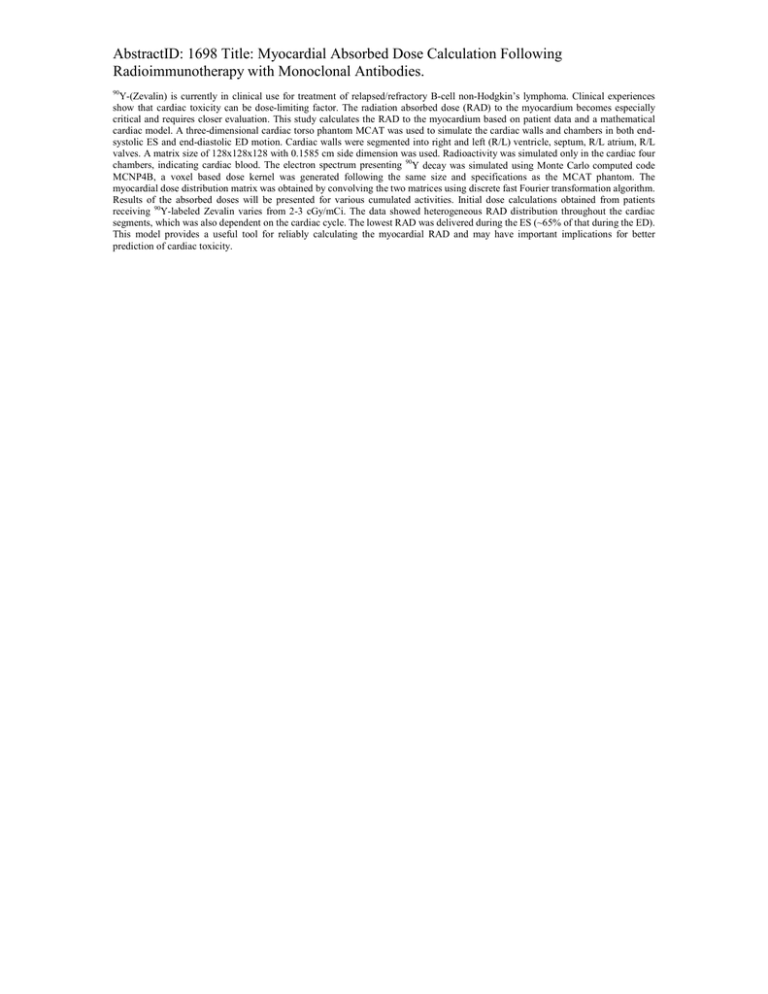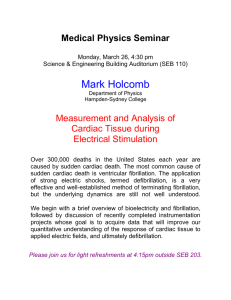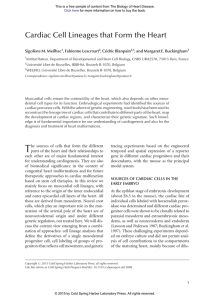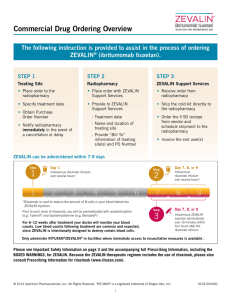AbstractID: 1698 Title: Myocardial Absorbed Dose Calculation Following
advertisement

AbstractID: 1698 Title: Myocardial Absorbed Dose Calculation Following Radioimmunotherapy with Monoclonal Antibodies. 90 Y-(Zevalin) is currently in clinical use for treatment of relapsed/refractory B-cell non-Hodgkin’s lymphoma. Clinical experiences show that cardiac toxicity can be dose-limiting factor. The radiation absorbed dose (RAD) to the myocardium becomes especially critical and requires closer evaluation. This study calculates the RAD to the myocardium based on patient data and a mathematical cardiac model. A three-dimensional cardiac torso phantom MCAT was used to simulate the cardiac walls and chambers in both endsystolic ES and end-diastolic ED motion. Cardiac walls were segmented into right and left (R/L) ventricle, septum, R/L atrium, R/L valves. A matrix size of 128x128x128 with 0.1585 cm side dimension was used. Radioactivity was simulated only in the cardiac four chambers, indicating cardiac blood. The electron spectrum presenting 90Y decay was simulated using Monte Carlo computed code MCNP4B, a voxel based dose kernel was generated following the same size and specifications as the MCAT phantom. The myocardial dose distribution matrix was obtained by convolving the two matrices using discrete fast Fourier transformation algorithm. Results of the absorbed doses will be presented for various cumulated activities. Initial dose calculations obtained from patients receiving 90Y-labeled Zevalin varies from 2-3 cGy/mCi. The data showed heterogeneous RAD distribution throughout the cardiac segments, which was also dependent on the cardiac cycle. The lowest RAD was delivered during the ES (~65% of that during the ED). This model provides a useful tool for reliably calculating the myocardial RAD and may have important implications for better prediction of cardiac toxicity.








